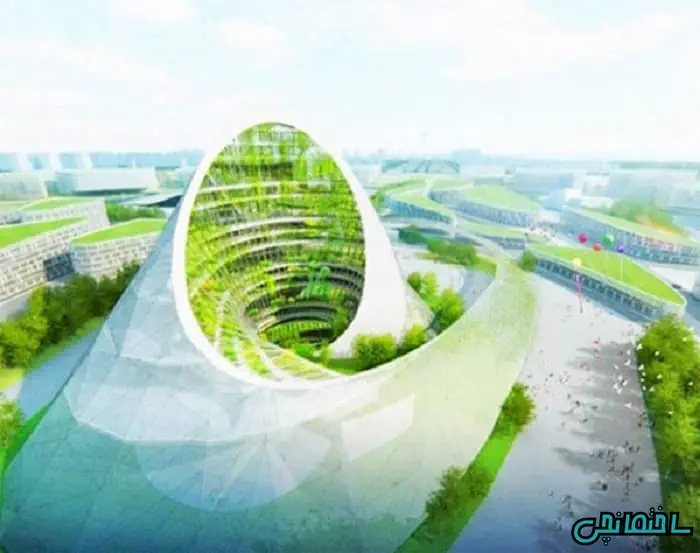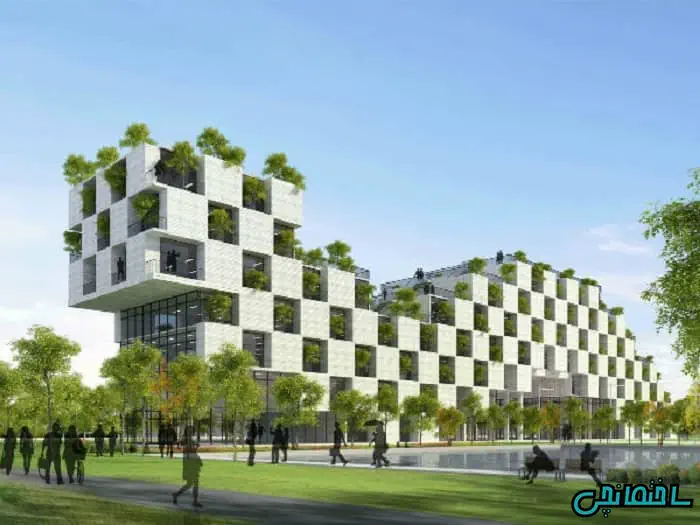Sustainable architecture is one of the most important developments in the field of architecture, which aims to design based on the principles of sustainability and saving energy.
Sustainability and sustainable development in order to reduce environmental pollution and optimize energy consumption have been the focus of designers and architects. This architecture is actually a reaction to the crises that have occurred in today’s industrial and modern world.
In today’s era, creating sustainability and its development according to the problems of the industrial age is very necessary in architecture and special attention should be paid to it.
This type of architecture reduces the damage caused by building design on energy resources and the environment. Therefore, a building built with a sustainable design has the least incompatibility with the environment.
Sustainable architecture, which is also called green design, works against common construction patterns and is based on ecological design and in harmony with nature. Green design is actually a triangle in which energy, ecology and climate form its three vertices.
General goals of sustainable architecture
- Paying attention to human life and improving its physical and mental condition
- Using materials whose production, consumption or destruction is compatible with the environment
- adaptation and harmony with the environment
- Limited consumption of fossil fuels
- Use of natural energy such as sunlight
- Minimal damage to the surrounding environment
- Reducing the production of carbon dioxide gas
- Respecting nature and using its potential
- Reuse of building materials and recycled materials
- Reducing the production of construction waste
- Increasing the useful life of the building
- Preventing the use of building materials incompatible with nature

Features of sustainable architecture
Harmony with the environment
In sustainable design, the building is compatible with its surrounding environment and climatic conditions and communicates with it. This design provides the current human needs in such a way that the future generations can also use energy sources.
read! Types of elastomeric or elastomeric insulation
energy saving
High flexibility, minimum energy consumption and high efficiency in using energy resources are essential points in this architecture. Therefore, the use of limited resources available in nature is reduced and environmental pollutants are managed in order to prevent disruption of the natural cycle.
An architect can reduce the amount of energy resources used in the construction of a building by careful use of energy sources. In green architecture, the building is built using local and recyclable materials.
Correct use of materials
The materials required in this architecture must have the necessary durability and resistance, and not only their preparation should be done with the least amount of energy, but also the amount of chemicals in them should be very small.
The most important principle in sustainable design is the choice of materials and their performance. A building should be about 80% self-sufficient in order to supply the required energy.
Responding to human needs
Sustainability means continuity of life in the future and refers to economic, social and environmental sustainability. This concept is based on the three principles of saving resources, human design and design in harmony with the life cycle.
Architects use the harmonic order that exists between the elements of nature as their design model and implement sustainable architecture, which is called ecological architecture, environmental architecture, and green architecture. Green design is related to structural, electrical and mechanical engineering.
In the design of a structure, in addition to attention to texture, light, beauty and fit, other environmental, human and economic factors should also be considered.
read! Building architecture with active and passive solar systems
These factors include regional and cultural identity, climate, building materials, compatibility with the substrate, meeting human needs, building facade, etc.

The effort of sustainable thinking is to adapt architectural designs to the surrounding environment. In fact, this thinking deals with the use of construction methods suitable for the environment. By doing this, the negative effects caused by the construction will be reduced to the lowest possible level.
By using these technologies, it is possible to fix the shortcomings of past architecture and adopt new methods for construction.
Methods that waste less building materials with optimal implementation and can be recycled after use. The production of building materials and new construction are factors to achieve sustainable development in the construction industry.
Final points of sustainable architecture
The main goal of green design is to create conditions for the building that can minimize the use of natural and mineral materials by using recycled materials. As a result, a kind of balance is created in the cycle of nature and natural resources will not be lost for future generations.
Changes and transformations in the design and construction of the building take place according to the needs of the society. Therefore, if the relationship between new technologies and sustainability goals are taught, environmental problems will be reduced and innovation and new technologies will serve sustainability.

